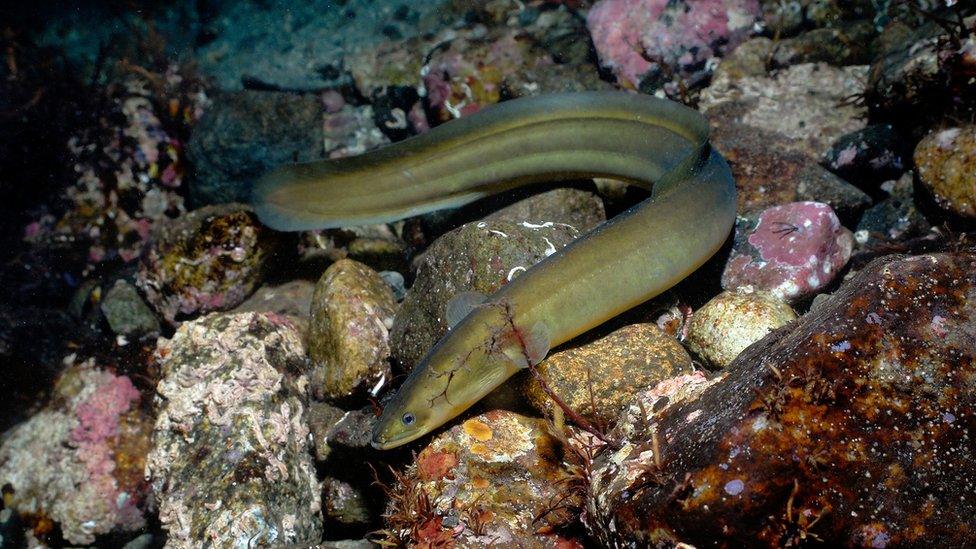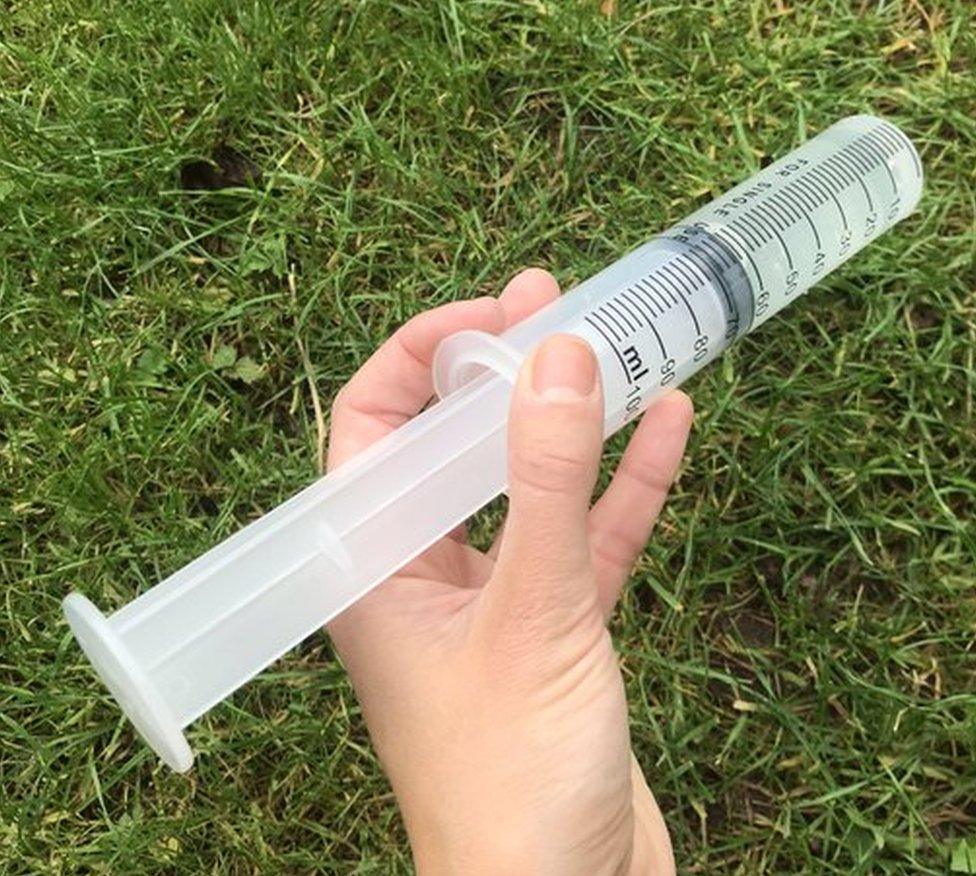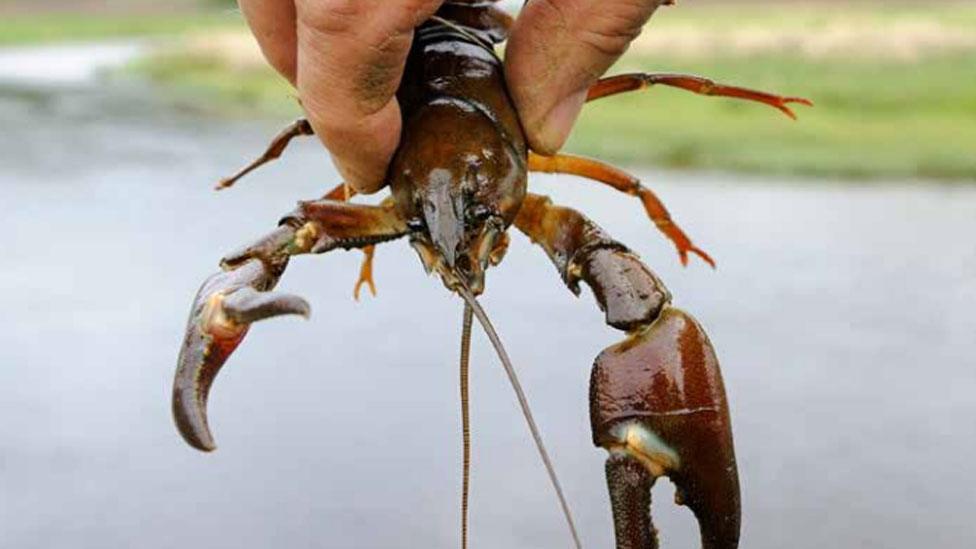DNA technique used to help fish in River Chew
- Published

The project aims to help species such as the European eel
A project has begun to identify species of fish in a river, by analysing the DNA of fish scales in water samples.
Bristol Avon Rivers Trust (BART) is carrying out the pilot scheme on the River Chew in Somerset.
The relatively new technique, known as eDNA, can identify organisms missed during more traditional survey methods, such as electro fishing.
BART said it hoped the results will allow it to improve the river for the Atlantic salmon and the European eel.
BART's head of operations, Simon Hunter, said it was an "amazing opportunity" to use the "relatively simple" sampling method, which requires only a syringe and a filter.

The eDNA technique requires only a syringe and a filter
"We do know through electro fishing what fish are present in the river and roughly where, but this is a lot less intrusive... and this is a much quicker and less expensive way of doing things," he said.
The water samples containing biological fragments, such as shells and fish scales, are sent to a laboratory to be DNA sequenced and analysed, leading to the identification of all the species in that stretch of water.
Mr Hunter said the project would allow the trust to better understand species distribution on the river, and allow it to prioritise work to create channels for salmon and eels, in particular, to pass through.
"If results from the pilot project indicate a relatively low abundance or even absence of a particular genus upstream of a structure, for instance a weir, it will help identify connectivity issues and habitat types.
"We would like to see the reconnecting of the river to expand the spawning areas for migratory fish, but also to provide wider habitat for the plethora of other fish and ecology found lower within the River Chew."
- Published13 December 2017

- Published18 March 2015
